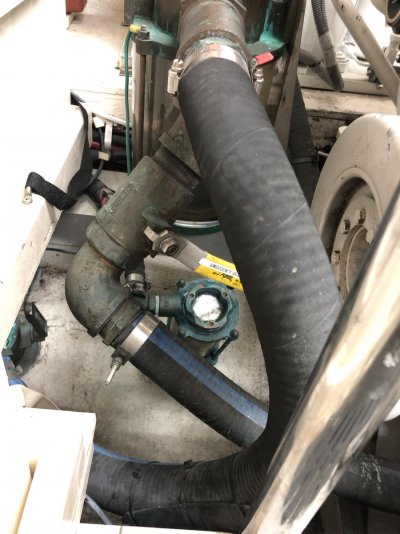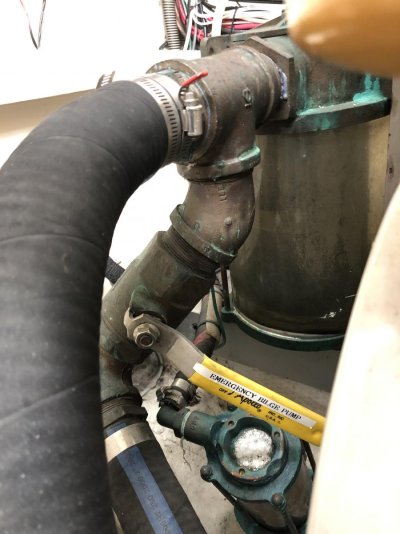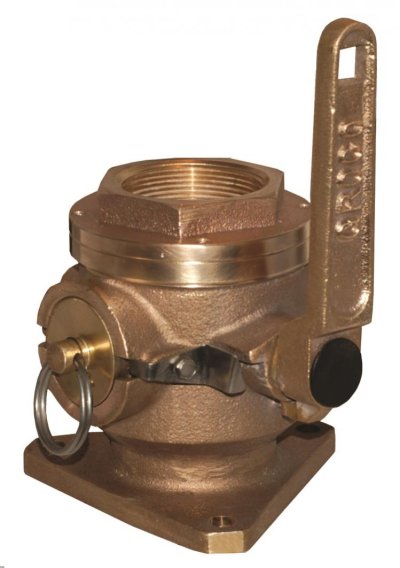jimL
Senior Member
- Joined
- Mar 8, 2015
- Messages
- 359
- Location
- USA
- Vessel Name
- Lemon Drops
- Vessel Make
- 2001 Grand Banks Europa 52
We have a 2001 Grand Banks Europa 52 that is new to us. We think the previous owner had installed a crash pump off the starboard engine. We’re familiar with crash pumps because our previous Mainship aft cabin trawler had one on each engine.
The theory is that if you are taking on water, more than your high capacity pump can handle, one goes to the engine room and turns the valve so the engine sucks the water out of the bilge instead of taking cooling water from outside the boat. I understand the concept.
What has me baffled is that when I sea-trialed the boat and subsequently moved it 90 nm the crash pump valve was open, but no water came in the boat (ok, makes a few drops). So this weekend as I inspected each seacock and valve I moved the valve to closed. I’m guessing the top part of the valve must be above the waterline otherwise I would have sunk a few months ago.
Please look at the pic of the closed yellow valve and render any thoughts. Is there a reason to keep the crash pump open during normal cruising – other than if something we terribly wrong, the engine would suck excessive water out?
Ideas?
Thanks
Jim
The theory is that if you are taking on water, more than your high capacity pump can handle, one goes to the engine room and turns the valve so the engine sucks the water out of the bilge instead of taking cooling water from outside the boat. I understand the concept.
What has me baffled is that when I sea-trialed the boat and subsequently moved it 90 nm the crash pump valve was open, but no water came in the boat (ok, makes a few drops). So this weekend as I inspected each seacock and valve I moved the valve to closed. I’m guessing the top part of the valve must be above the waterline otherwise I would have sunk a few months ago.
Please look at the pic of the closed yellow valve and render any thoughts. Is there a reason to keep the crash pump open during normal cruising – other than if something we terribly wrong, the engine would suck excessive water out?
Ideas?
Thanks
Jim



